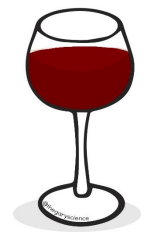At Nutrition for Life we promote a healthy, balanced lifestyle. The following information has been prepared to help you make more informed choices when it comes to alcohol consumption.
Alcohol metabolism and impacts
Alcohol is metabolised by the liver where it is utilised as an energy source rather than being stored as glycogen. If weight loss is your goal, alcohol consumption can slow you down due to its effect on the liver and the high calorie content. Different types of alcohol also have differing levels of carbohydrates and sugars:
• Distilled spirits often have no carbohydrates if consumed straight and without a flavoured mixer.
• The calories in a glass of wine come primarily from the alcohol with very few carbohydrates.
• Dry wines, most spirits and low-carb beers have the least carbohydrates.
• Low-carb beers are still full-strength alcohol (5% alc.) and should not be mistaken for a reduced-alcohol option.
• Regular beers, ready-mixed drinks (alcopops) and cocktails are full of carbohydrates and sugars and should be avoided if adopting a lower carbohydrate lifestyle.
While alcohol is part of social culture, it can also decrease motivation, lower inhibitions, impair driving ability and may interact with medications and supplements. This could potentially cause harm to yourself or others.
Alcohol consumption and diabetes management
If you are taking insulin or diabetes medication, alcohol consumption can cause
hypoglycaemia (very low blood glucose levels). Therefore, it is important to:
• limit how much you drink
• drink alcohol with your meal or with a small portion of fat (eg. cheese) to
minimise the impact
• carefully monitor your blood glucose levels
• drink plenty of water
• have a friend with you that knows what to do in an emergency.

Alcohol limits
Due to individual variability, it is difficult to recommend safe and reasonable limits. Occasional, moderate consumption of no more than 2 standard drinks per day, with at least 2-3 alcohol free days per week, is desirable.
National Guidelines
To reduce the risk of harm from alcohol-related disease or injury for healthy men and women, drink no more than 10 standard drinks per week and no more than 4 standard drinks on any one day.
The less you choose to drink, the lower your risk of alcohol-related harm. For some people not drinking at all is the safest option.
The following table provides an overview of different types of alcoholic beverages, including total energy and carbohydrates per serve. Use this table as a guide to help you make more informed choices about what you drink, remembering that the amount and frequency you choose to consume is your responsibility.
| Beverage | Volume (ml) | Energy (kcal) | Carbohydrates (g) | Standard drinks |
|---|---|---|---|---|
| BEER | ||||
| Beer, mid-strength (3.5% alc.)* | 375 | 90 | 3.4 | 1.1 |
| Beer, low carb (4% alc.)* | 375 | 109 | 3.4 | 1.2 |
| Beer, full strength (4.9% alc.)* | 375 | 135 | 7.5 | 1.5 |
| Beer, light (2.7% alc.)* | 375 | 94 | 8.6 | 0.8 |
| Cider, dry (5.2% alc.)* | 375 | 143 | 11.6 | 1.6 |
| Cider, sweet (4.7% alc.)* | 375 | 199 | 25.9 | 1.4 |
| WINE | ||||
| Red wine (12% alc.)* | 150 | 102 | 0.0 | 1.4 |
| Semillon Sauvignon Blanc (8.5% alc.) | 150 | 74 | 0.7 | 1.0 |
| White wine, sparkling (11% alc.)* | 150 | 98 | 1.5 | 1.3 |
| Champagne (12% alc.)* | 150 | 111 | 2.5 | 1.4 |
| Rose (11% alc.)* | 150 | 105 | 3.0 | 1.3 |
| Passion Pop (9.5% alc.) | 150 | 150 | 12.0 | 1.1 |
| Moscato (5.5% alc.) | 150 | 96 | 14.6 | 0.7 |
| White wine, sweet (11% alc.)* | 150 | 150 | 15.8 | 1.3 |
| SPIRITS | ||||
| Gin, Rum or Whiskey (40% alc.)* | 30 | 67 | 0.0 | 1.0 |
| Vodka (40% alc.)* | 30 | 68 | 0.0 | 1.0 |
| White wine, sparkling (11% alc.)* | 150 | 98 | 1.5 | 1.3 |
| Bourbon & Coke (incl. 30ml nip of spirits and 125ml Coke)* | 155 | 120 | 7.5 | 1.0 |
| Gin & Tonic (incl. 30ml nip of spirits and 125ml tonic)* | 155 | 110 | 10.0 | 1.0 |
| Vodka Cruiser (4.6%) | 150 | 150 | 12.0 | 1.1 |
| UDL, Vodka, Lime & Soda (4.2% alc.) | 375 | 206 | 29.3 | 1.3 |
Sources:
www.calorieking.com.au for Energy (kcal) and Carbs (g)
www.alcohol.gov.au for approximate number of standard drinks
Note: The Australian standard drink is defined as containing 10g of alcohol. Always check the container for the number of standard drinks in an alcoholic beverage so that you can monitor your consumption.



